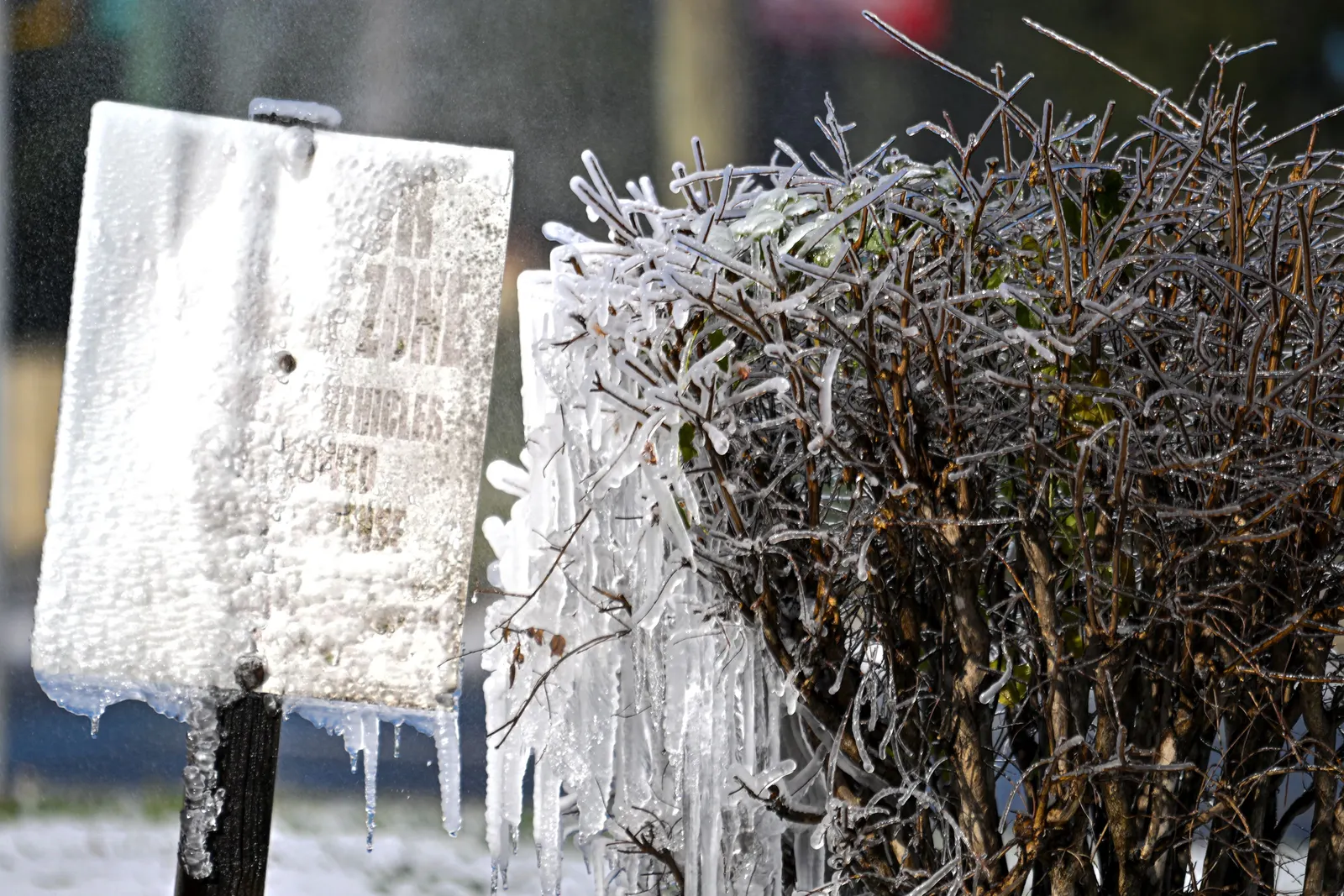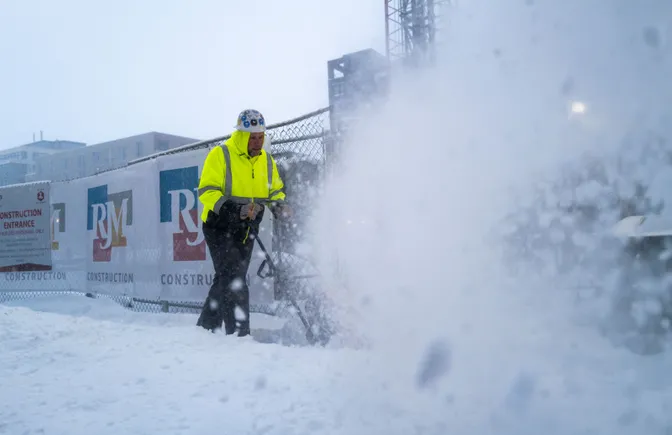A major snowstorm slammed the Gulf Coast this week, while bitter cold gripped much of the eastern half of the country as temperatures plummeted to dangerous lows.
The frigid weather can create hazards not only for homeowners and motorists, but also for construction workers who must toil outside, especially those in regions that don’t typically experience freezing conditions.
“When you think about how heat affects [workers] based on what they’re used to, like someone who works in an environment that’s always hot, they’re going to be more accustomed to the heat,” said Jessica Bunting, director of research to practice for Silver Spring, Maryland-based CPWR — the Center for Construction Research and Training. “It can be similar with the cold. Not only are our bodies more acclimated, but also we have better gear, better clothing.”
And this is far from the first time in recent years that extreme cold has hit unusual locales. Temperatures measured at Dallas-Fort Worth International Airport plummeted to 2 below in February 2021, as the cold created a statewide energy crisis, the Dallas Morning News reported. In 2022, much of Texas experienced below-freezing temperatures over the holidays.
These unusual lows contrast with summer temperatures that have soared above normal levels in recent years. Scientists say climate change fuels those extreme weather events, both high and low temperatures.
Safety experts say working in the cold requires a similar vigilance from jobsite superintendents and managers as working in heat. Having a safety plan, observing workers and providing worker education about newer hazards is key, they told Construction Dive.
Putting people first
New York City-based Turner Construction is no stranger to projects in different climates. The builder is currently working on the Buffalo Bills $1.4 billion stadium in Orchard Park, New York. The new venue, very near to the existing one, will undoubtedly become known for hosting snowy games.
But that snowfall doesn’t wait for construction to be done.
“I think the biggest thing is just awareness and knowing that you’re going to have winter weather issues,” said Steve Spaulding, environmental health and safety chief for Turner.
Spaulding repeatedly emphasized planning — safety teams should have an idea of when temperature drops and snow or sleet is coming — to prepare the site to protect materials and the workforce.
Todd Friis, senior vice president of risk management for Chicago-based Clayco, the largest contractor in the Midwest, said his firm also deals with projects in various climates, and he also emphasized the need to have a detailed scheme.
“Dealing with winter conditions requires proactive planning, which is why we develop detailed winter weather preparation plans well in advance of any anticipated extreme conditions,” Friis said. “These plans prioritize worker safety while maintaining efficient and effective construction progress.”
Both Turner and Friis have adopted the use of gas or electric heaters when necessary — when temperatures drop below 40 degrees for Clayco. But placing a warming zone requires planning, support for capacity, reliable heating sources, protection from the elements and knowledge of additional hazards, such as carbon monoxide, Friis said.
Employer responsibilities
In cold weather, workers can develop cold stress and hypothermia before they begin to notice the worst symptoms, Bunting said.
Even on a frigid jobsite, employees still sweat, which in cold temperatures can be dangerous, as hypothermia sets in fast, said Mary Bauer, an OSHA compliance assistance specialist based in Wisconsin. Additionally, cold weather can impair a worker’s judgment in subtle ways.
For example, someone in the frigid cold may choose to take a shortcut, walking along a more hazardous route to get to warmth faster.

A road sign is covered in snow and ice following an historic winter storm on Jan. 22, 2025 in Tallahassee, Fla.
Miguel J. Rodriguez Carrillo via Getty Images
OSHA does not have a specific standard for cold weather safety, though it does have multiple resource pages to assist employers. It isn’t exactly clear how many injuries or fatalities are caused by extreme cold, Bunting said, as most data merely classifies incidents as temperature-related. That said, it may be safe to assume heat causes more of those injuries, as work is more likely to continue in heat than in freezing cold.
Even still, employers do have responsibilities, and failing to keep the jobsite safe could result in injury and citation. OSHA doesn’t have guidance on when a workplace should be shut down, Bauer said. Experts told Construction Dive the decision to carry on with work is not taken lightly and depends on a variety of factors, including if the roads are drivable.
“In OSHA’s eyes, everybody needs a safe and healthful workplace,” Bauer said. “And if the weather, the climate, or something is interfering with that, the employer needs to make a change.”
When it comes to dressing for the warmth, Bauer said, that’s actually the responsibility of the employee. Employers still must take into account what workers are accustomed to and what’s in their wardrobe.
“If you’re talking about the southern states having situations where they’re working in subfreezing, something below 30 degrees and they’re not used to it, they don’t own gloves, they don’t own jackets and the right type of shoes, the employer should be ensuring they have adequate protection before they go out,” Bauer said.
Nonetheless, she acknowledged that some people in her home state flaunt the freezing weather.
“We have people in northern Wisconsin that wear shorts in the winters,” she said. “I mean, it’s just crazy.”
In addition, the experts suggested:
- Ensuring proper safety gear and warm weather gear.
- Offering frequent breaks for workers to rest, warm up and hydrate.
- Educating employees on the early signs of cold stress and hypothermia, such as shivering, stomping to keep warm, confusion or loss of coordination.
- Paying close attention to potential hazards to ensure they aren’t worsened by the cold weather.
- Knowing how the cold weather can impact existing safeguards. For example, Friis said sometimes air horns used in case of emergency don’t function properly in the extreme cold.
Spaulding said that resources abound for cold weather safety, and it’s an area where the big players collaborate instead of compete by sharing resources and best practices.
“If you’re always thinking of the worker first, it makes it very easy,” Spaulding said.

